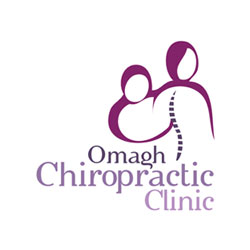Understanding physical stress
What causes Physical stress on our bodies?
Poor posture when: sitting, standing sleeping, walking, working.
Mechanical trauma
Sedentary lifestyles
Obesity
Heavy lifting
Working in uncomfortable positions
A slip or a fall
Sports injuries
Pregnancy
Overuse/repetitive strain
Arthritis
Infections
Tumours
Congenital abnormalities
…and more
Physical stress can affect our Posture. Posture is not just how you hold your neck or the slump of your shoulders and low back.
Posture and Your Health
Your doctor of chiropractic is a specialist in body mechanics, and places considerable emphasis on the body’s structural, muscular, and neurological components. Additionally, the holistic (wellness) approach of chiropractic care includes training in nutrition, disease prevention, life-style intervention, and the psychological aspects that play a vital role in health. Because there is considerable emphasis on the structural, muscular and neurological aspects and how they relate to health, this focus is aimed at maintaining sound body mechanics and good posture.
The spine is not an inflexible rod as some people would believe. In fact, it is quite flexible. Structurally strong, it allows the agile movement of the human body. It not only supports the body and all its organs, it also protects the sensitive and delicate spinal cord and spinal nerves. Every activity, even breathing, demands movement of the spine, ribs and attachments. The spine gives the human structure both strength and agility.
Humans are one of a small group of beings who are classified as “bipeds” (stand erect on two legs.) While this particular posture gives humans the advantages of agility, leverage and mobility, it also creates certain structural stresses. The weight of the body provides a continual pull of gravity which can cause postural imbalances in the feet. Because the human body is like a chain of interconnected links (weight bearing joints), improper movements of the lowest link (the foot/ankle) can cause abnormal movement or twisting at other such links higher up – the knee, hip, pelvis and spine. These abnormal joint motions often produce stress pain. So even if your feet don’t hurt, they may be contributing to pain in another part of your body. Flexible, custom-made orthotics are designed to work with chiropractic adjustments to help restore postural balance and relieve pain.
The most obvious benefit of good posture is efficiency and comfort. Yet, because of the interrelationship of the structural (bone) and functional (organ) systems of the body, posture is also a factor which can impact health. For example, poor posture compromises the movements of the rib cage and does not allow the lungs to function at maximum efficiency to bring much needed oxygen to the tissue and eliminate carbon dioxide wastes. Other vital organs of the body are also restricted when body posture is improper, producing structural stress.
The Importance of Posture
While people with good postures stand straighter and look better, there are advantages to correct posture that go far beyond appearance.
The human body, like any other machine, to function properly is dependent on balance, rhythm, timing and coordinated action of all its components. Correct posture enables the body to function more efficiently. The body’s motion system controls posture.
Scientists call this system the neuro-musculo-skeletal system (NMS), and break it down into three sub-systems
The Sub-systems of Motion:
1. Contracting System
Muscles contracting to create motion: Also called the Active System, because it requires active control
2. Connecting System
The framework of the body: Also called the Passive System, because we have no active control of these tissues, which include:
- Bones: to hold the body up.
- Ligaments: to hold the bones together at the joints.
- Joint Capsule: the ligamentous sack around every joint containing the synovial fluid for
joint lubrication. - Tendons to hold the muscles to the bone.
- Cartilage and discs: to protect weight-bearing and stressed surfaces where bones meet in joints.
- Fascia: Tissue holding all the pieces together.
3. Control System
Telling the muscles what to do, and when to do it.
- Brain: gives the orders, both conscious and unconsciously.
- Spinal Cord: main cable and low-level processing for information between the brain and everything in the body.
- Nerves: the wires controlling the muscles.
- Mechanoreceptors: sensors within muscles and joints telling the brain where the body is in space.
For example, you can tell if your hand is open or clenched in a fist even without looking because of these deep sensors.
Our bodies move when, either consciously or unconsciously, brain and nerves of the control system tell the muscles what to do, within the constraints of the physical limitations of the muscles, ligaments, and tendons. The human body is literally designed to move, and that motion follows in a chain, known as a kinetic chain. Posture and body motion depend on the coordinated workings of these Contracting, the Connecting, and the Control systems.
Abnormal motion or position of spinal joints or you extremity joints can rub, irritate, pinch or choke delicate nerves. This can impair the function of the tissues, organs and systems controlled by these nerves. Muscles can weaken and atrophy, or become tight and go into spasm. Unfortunately, scar tissue and adhesions penetrate these malfunctioning muscles, changing their elasticity. Discs, ligaments and other soft tissues can malfunction too. These important soft tissues have a poor blood supply so proper healing often requires continued care even after relief of obvious symptoms




